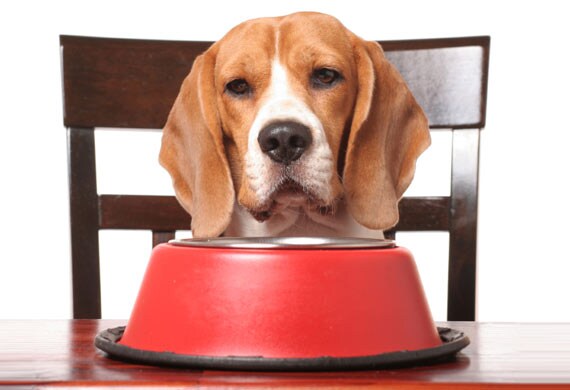 The food pyramid is no longer. Now the USDA recommends My Plate, illustrating how your typical dinner plate should be divided with meat, grains, fruits, and vegetables. And for dogs, now we have My Bowl.
The food pyramid is no longer. Now the USDA recommends My Plate, illustrating how your typical dinner plate should be divided with meat, grains, fruits, and vegetables. And for dogs, now we have My Bowl.
A few days ago I was invited to join in the Hills Science Diet Ideal Balance and Pet MD My Bowl for Dogs Briefing. Dr. Jennifer Coates, DVM and other organizers discussed the important topic of pet nutrition.
According to surveys, 80% of pet parents think that the nutritional needs of dogs are similar to their own nutritional needs. That is, we believe that dogs need meat protein, large amounts of vegetables and fruits and small amounts of carbohydrates. The truth is, dog’s nutritional needs are different than people’s. Dogs can eat many of the same foods as people, but the main difference is in proportion.
MY PLATE: MY BOWL:
My Bowl (with an additional bowl of water at all times!) helps illustrate how much protein, carbohydrates, fats and oils, vitamins and minerals are needed for balanced nutrition. For example, about 50% of the dog’s food should be from carbs. The most important consideration with carbs, as with all ingredients, is choosing healthy carb options such as whole grains, brown rice or potatoes.
Protein should be listed first on the dog food bag, and look for quality protein such as chicken, lamb and fish. Fruits and vegetables are an important natural source of vitamins and minerals. Olive oil is an excellent source of fats and oils.
The My Bowl illustration definitely helped me gain a better understanding of how the proportions for dog food differ from My Plate. I always try to look for the best quality ingredients I can afford (some are just too far out of my budget), and now I will also consider in what proportions the ingredients are offered. This may take a bit of sleuthing with the dog food labels, but maybe in time this type of information will be made clear on packaging.


